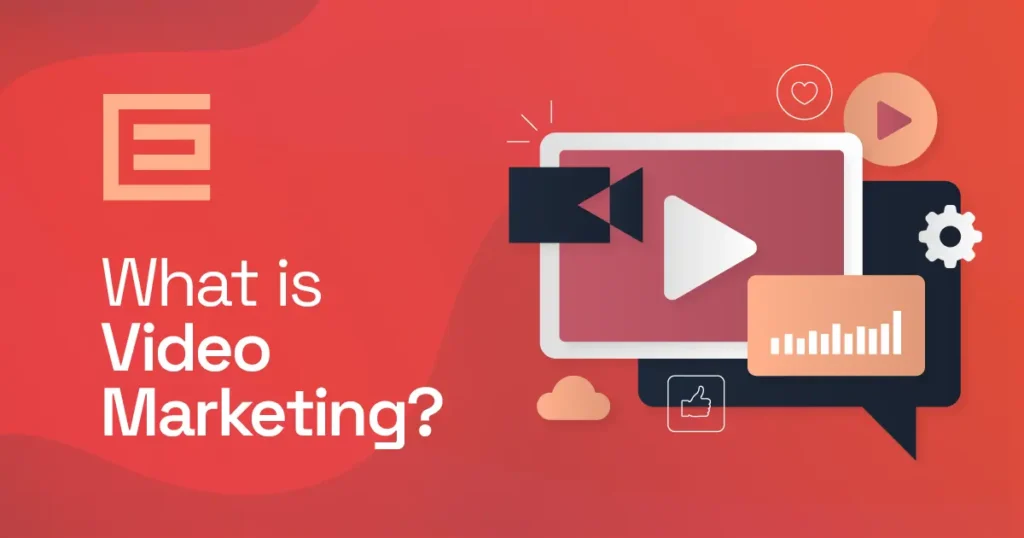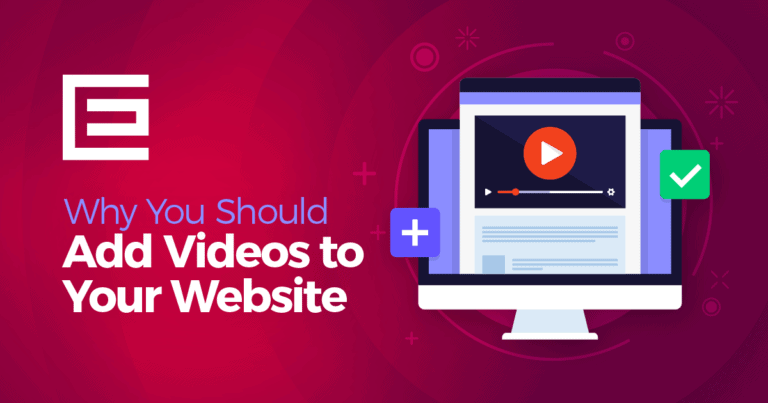Video marketing is a dynamic and compelling content format that is transforming the face of promoting a business. Video allows businesses to convey their messages in an engaging, accessible, visually appealing, and memorable way.
Video marketing for businesses isn’t merely about creating and distributing videos; it’s about strategically incorporating video into your overall marketing strategy to increase brand awareness, boost conversions, and ultimately drive growth. But how can you do it effectively?

Tips for Getting Started With a Successful Video Marketing Strategy
How Often Should I Post Videos?
When it comes to video marketing, there is no one-size-fits-all approach. Each business must decide on its cadence and frequency for creating and posting videos. The most important thing is to ensure that you are consistently producing new content for your audience while keeping the quality of your videos high.
However, in general, a good rule of thumb is to post at least once a week, depending on the size of your audience. This will help you keep momentum by providing fresh content for your viewers.
Budgeting and Resource Allocation
It’s important to think about budgeting and resources when planning your video marketing strategy. Depending on the type of videos you want to create, there may be different costs associated with equipment, software, and other resources. Additionally, if you plan to outsource any part of the process (such as graphic design or animation), that can impact your budget too.
Before You Shoot Your First Video
Identify Your Target Audience
Before you start creating videos for your business you’ll want to think about what kind of people will watch your videos. Take some time to think about who your ideal audience is – their age, gender, interests, location, etc. This will help you create content that resonates with them and is more likely to convert into leads or sales.
Develop an Engaging Video Style
Once you know who your target audience is and have an idea of the topics you want to cover in your videos, it’s time to start planning your video style.
Think about the tone and message you are trying to convey with each video as well as any branding elements like colors or logos that could be added for visuals. You can also experiment with different formats such as tutorials, interviews, how-tos, or a combination of these.
Creating Engaging Video Content
Storytelling Techniques
Storytelling can be a powerful tool for creating engaging content when done correctly. When crafting your videos, consider how you can use visual elements to draw people in and make them feel like part of the video itself. This could include using graphics, music, different camera angles, B-Roll, or even interactive elements for viewers to take part in.
Video Editing Best Practices
After you’ve shot your video clips, it’s time to put them together in the editing process. During this step, think about how to create a seamless flow for viewers so that they don’t lose interest or get bored. You can use transitions and other effects to keep things interesting and add some visual flair.
If you have the budget, some video editing programs to consider are Adobe Premiere Pro, Vegas Pro, or Final Cut Pro, but there are also some great online tools you can use to edit videos like Canva, Capcut, or Veed.io.
Scriptwriting and Storyboarding
Before you start shooting your videos, it’s important to have a script and storyboard in place. This will help ensure that your video is well organized and flows naturally from one point to the next.
When writing your scripts, think about how to keep viewers engaged with interesting content as well as clear calls-to-action. There are also some really great AI tools you can use to help you create scripts for your videos.
Tips for Filming and Production Quality
Once you have your script and storyboard in place, it’s time to start filming. Be sure to use the right equipment for a high-quality look and sound. This could include using a tripod, microphone, lighting kit, or other tools depending on what kind of video you are creating.
You don’t have to necessarily have a fancy camera if you’re just getting started either. You can create really great videos using just your cell phone. Your message and content are much more important than having the latest equipment.

Video SEO and Optimization
Optimizing Video Titles, Descriptions, and Tags
Once your video is edited and uploaded to your desired platforms, it’s time to think about optimization. This involves adding the right titles, descriptions, and tags for each video so that they appear in searches and are more likely to be seen by the right people. Just like SEO for your website you’ll want to keep SEO in mind for YouTube as well.
When writing your title and description, keep them as concise as possible while still being descriptive. There are some really great tools that can help you out with YouTube SEO like VidIQ or TubeBuddy.
Thumbnail Design and Its Importance
Thumbnails are often the first thing potential viewers will see when searching for content, so it’s important to make sure they look professional and appealing.
Google Support has some advice on best practices when creating your thumbnails. If you don’t have a graphic designer on staff, you can always use a tool like Canva to create thumbnails for your videos.
And don’t forget that thumbnails should be used on all platforms you post to, not just YouTube.
Measuring Success With Key Metrics
Finally, be sure to measure the success of your videos with key metrics. This will help you develop a better understanding of what’s working and what isn’t so that you can make adjustments as needed. Some metrics worth tracking on YouTube include:
- Views
- Engagement rate
- Average view duration
- Average percentage viewed
- Impression clickthrough rates

Video Distribution Strategies
Selecting the Right Platforms (YouTube, Facebook, Instagram, TikTok, etc.)
There are so many different video platforms to choose from these days, each with its own strengths and weaknesses when it comes to marketing. Consider which ones make sense for your content and objectives, then create a plan for distributing your videos across the right channels.
For example, YouTube is great for hosting longer-form content while Instagram and TikTok are better suited for shorter videos.
Cross-Platform Promotion
Additionally, think about how you can use one platform to drive viewers to another. For example, if you have a popular YouTube video, consider linking to it in your Instagram stories or sharing it on other social media channels for more exposure. This could help increase viewership and get more people engaged with your content.
Leveraging Closed Captions and Transcriptions
Closed captions and transcripts can be a great way to optimize your videos for search engines. This involves adding text-based versions of your audio content that are easier for search engines to interpret and rank higher in searches.
Additionally, closed captions can help make your content more accessible for viewers with hearing impairments or those who are watching without sound.
Videos with captions are also much more user-friendly than ones without. Think about how often you’re scrolling through social media with your phone on silent and see a video pop up in your feed. You want to be sure that your point is getting across to those users as well as users with their sound on.
Captions are easy to edit in YouTube Studio and you can download them easily to use on other platforms. There are also some pretty cool AI tools like Veed.io that do a much better job at transcribing than YouTube’s automated transcriber does.
Engaging Your Audience
Building a Strong Call-to-Action (CTA)
After viewers have watched your video, make sure to include a strong call-to-action. This could be something as simple as asking them to leave a comment or share the video with their friends. Consider tailoring the CTA for each platform you’re using and make sure that it is clear what viewers should do next.
Responding to Comments and Feedback
Finally, make sure to respond to any comments or feedback you get. This could be in the form of answering questions viewers have about your content, thanking those who shared it, or simply responding with an emoji to show that you read and appreciated their thoughts. By doing this, you can create better relationships with your viewers and encourage more people to watch your videos as well.
Analytics and Performance Tracking
Utilizing Analytics Tools (e.g., YouTube Analytics)
Once you’ve released your videos, it’s time to start tracking their performance. Utilize analytics tools such as YouTube Analytics and Google Analytics to get an in-depth look at how your video is performing, including things like watch times, likes/dislikes, shares, and more. This can help you understand what works and doesn’t.
A/B Testing and Experimentation
Additionally, consider running A/B tests on different elements of your videos. This could include testing out different titles, descriptions, thumbnails, and more to see which version performs best. Doing this can help you optimize your video content over time and reach a wider audience.
VidIQ and TubeBuddy are both great tools that were mentioned before that help out a lot with this.
Leveraging Insights and Adjusting Your Strategy
Finally, use the insights you get from analytics and A/B testing to continuously improve your video performance. This could include making changes to your titles, descriptions, thumbnails, or even the content itself. By leveraging the data you get from analytics tools and experimentation, you can make sure that each video is as optimized as possible for maximum reach and engagement.
Once you’ve gathered your data and analyzed it, it’s time to adjust your strategy based on what you’ve learned. This could mean focusing more efforts on certain platforms if they are performing well or changing up the format of your videos to better target a certain audience. By continually optimizing your video content using analytics tools and A/B testing, you
Video Marketing Trends and Innovations
Live Streaming and Real-Time Engagement
Live streaming is becoming increasingly popular with viewers, as it allows creators to interact in real-time with their audience. Consider using platforms such as Twitch, Facebook Live, and YouTube live for your video marketing strategy and leveraging the power of live streaming to engage more with viewers.
Personalization and AI-Driven Recommendations
Additionally, personalization and AI-driven recommendations are becoming more popular with viewers. Consider leveraging tools such as Veed.io to automatically personalize your videos based on the viewer’s interests and preferences. This could help boost engagement levels and make sure that every video is tailored for each individual viewer.
Conclusion
Video marketing is a really great marketing avenue for any company looking to reach new customers and build brand awareness. By leveraging the power of visuals and audio, you can convey your message much more effectively than through text alone.
Looking to Leverage Video Marketing for Your Business?
If you’re ready to take your digital marketing to new heights, we invite you to schedule a digital marketing consultation with TheeDigital. Our team of experts is ready to craft a strategy to grow your business. Give us a call at 919-341-8901 or click the button below to schedule a consultation.
Tags: Content Marketing • Digital Marketing • Video Marketing






